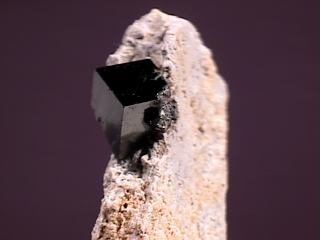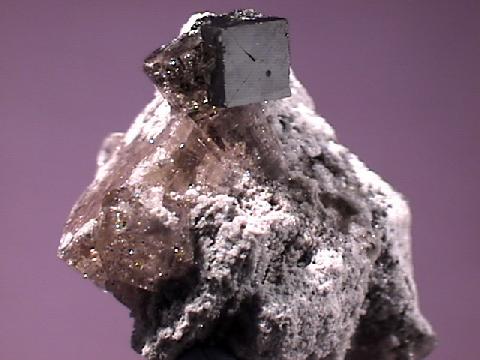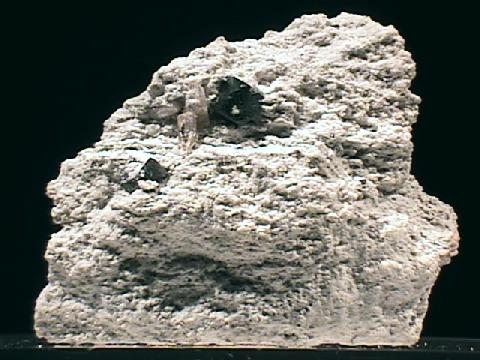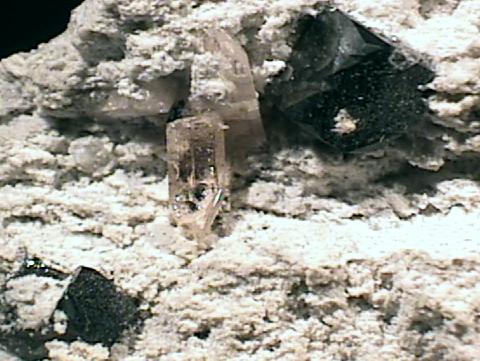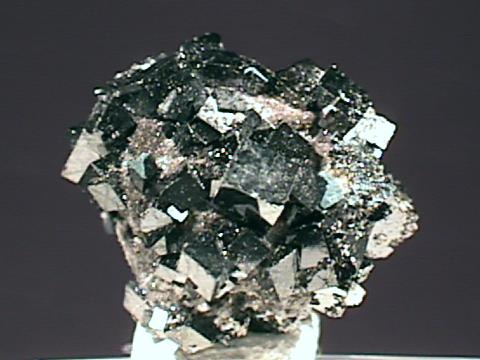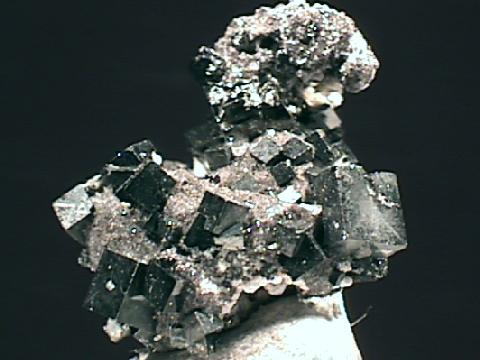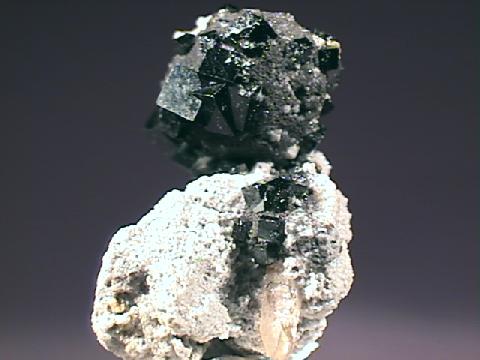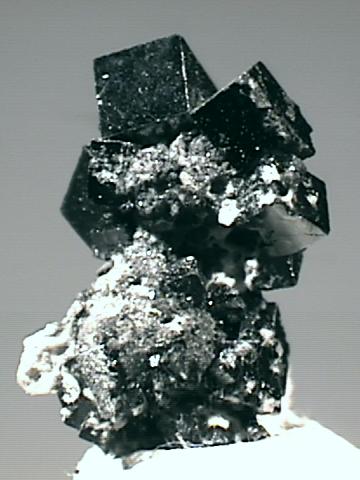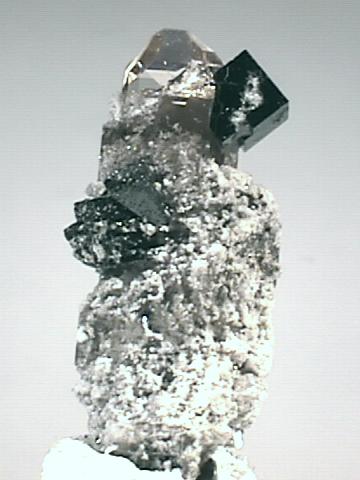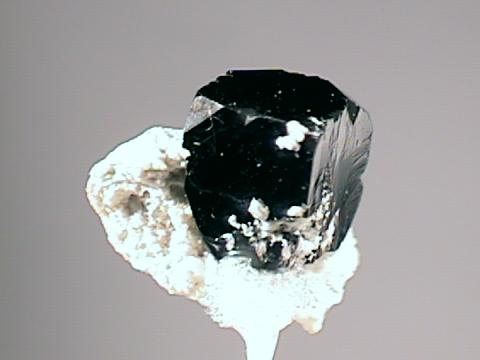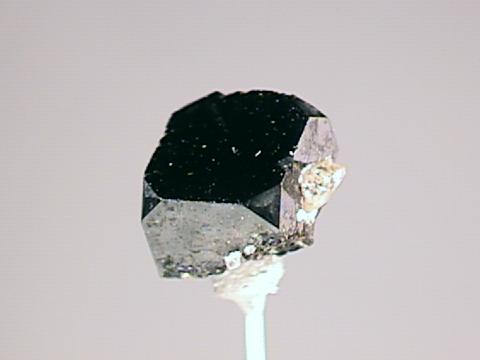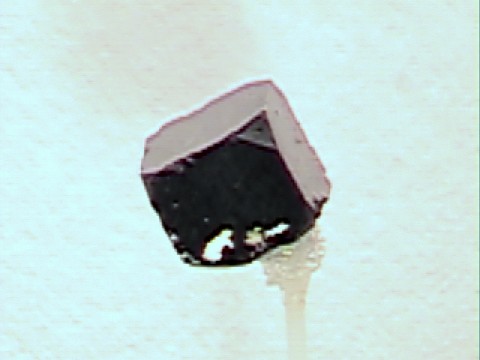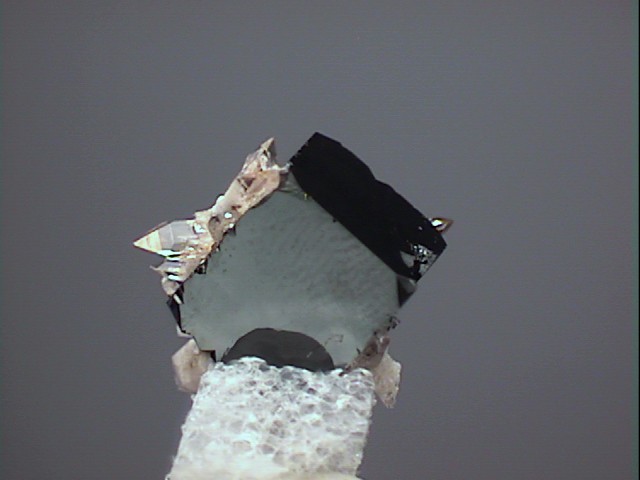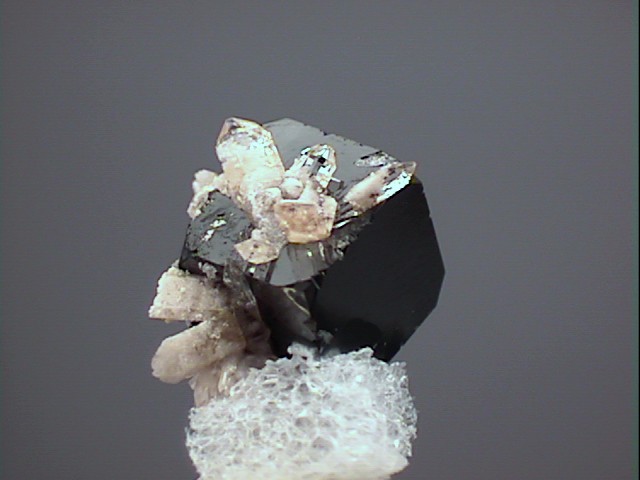 THE MINERAL BIXBYITE
THE MINERAL BIXBYITE
- Chemical Formula: (Mn, Fe)2O3, Manganese Iron Oxide
- Class: Oxides and Hydroxides
- Uses: A minor ore of manganese and as mineral specimens.
Specimens
The associated minerals include pink and clear
topaz,
pink beryl,
spessartine,
quartz,
hematite,
hausmannite,
The crystals of bixbyite are usually cubes. The corners can be modified by octahedral faces which truncate the corners with a single flat face. Also the faces of a dodecahedron can be seen modifying just the corners of the predominant cube with three faces per corner. If all three forms are present the crystal can look rather complex and beautiful.
As an ore of manganese, bixbyite is often under appreciated. When found massive, it is usually associated with other manganese oxides and is impossible to differentiate. Although iron can substitute for the manganese in the structure by over 50%, many bixbyite samples are nearly pure manganese oxide.
PHYSICAL CHARACTERISTICS:
- Color is dark black.
- Luster is metallic to submetallic.
- Transparency crystals are opaque.
- Crystal System is isometric; 2/m bar 3
- Crystal Habits include cubes often with octahedral and dodecahedral faces modifying the corners. Also as massive and granular.
- Cleavage is octahedral.
- Fracture is uneven.
- Hardness is 6.5
- Specific Gravity is 4.9 - 5.0 (slightly above average for metallic minerals)
- Streak is black.
- Associated Minerals include
beryl,
quartz,
spessartine,
hematite,
pseudobrookite,
hausmannite,
braunite and topaz. - Notable Occurrences are limited to the Thomas Range, Utah; San Luis Potosi, Mexico; northern Patagonia, Argentina; Gerona, Spain; India; Sweden and South Africa.
- Best Field Indicators are crystal habit, density, hardness, associations and locality.

